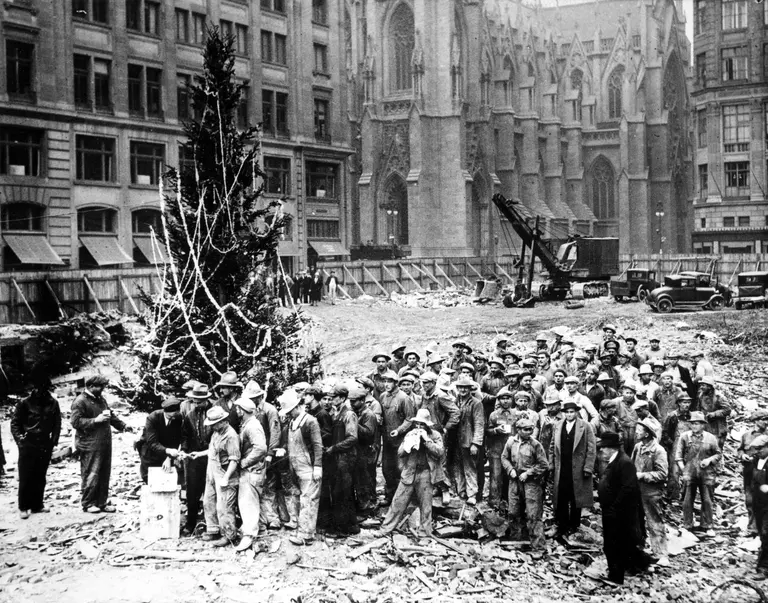In New York’s tenement days, Monday was laundry day

“A Mondy washing.” Image from the Library of Congress, Detroit Photographic Co., via Wikimedia Commons
The image of New York’s old tenements is hardly complete without lines of laundry hanging between each building. Like today, doing laundry was a public endeavor for most New Yorkers. But unlike today, they depended on their building’s laundry lines to dry everything out. Ephemeral New York notes that Monday was typically the chosen day to get it done. As the photo caption says above, full lines of laundry were evident of “A Monday’s Washing.” Monday was known as a “hard wash-day” that required incredible effort from the women of the tenements.
Here’s an excerpt from Tyler Anbinder’s book about the notorious 19th-century slum, Five Points:
[The women] first made numerous trips up and down the stairs to haul water up from the yard. Then they heated the water on the stove and set to work scrubbing.
Drying the wash was actually the most dreaded task. . . .The advantage of living on a low floor (with fewer flights of stairs to climb) became a disadvantage on wash day, because when hanging your laundry out to dry, “someone else might put out a red wash or a blue wash over it, and it drips down and makes you do your wash all over again.”
As the Museum of the City of New York notes, such laundry lines often served as inspiration to photographers. Bernice Abbott, in her photography of the first model tenements in NYC, “documented this space as a communal laundry line: ropes with pulleys led from apartments to five-story poles imbedded in concrete. Abbott made two exposures, with the laundry and poles forming different abstract configurations. She later recalled that winter day the laundry frozen stiff and the children huddled together, too cold to move.”
The laundry lines weren’t just used for clothes, either. You could run messages and cups of sugar from one apartment to another. Stretched diagonally down to the ground, the lines were used for sending groceries to the elderly or growlers of beer up to the corner saloon. As the author Luc Sante put it, “They were characteristic of a life stretched by necessity, out of interiors of apartments as far as possible into the public space beyond.”
Line drying started disappearing as industrialized laundries with delivery and drop off were introduced as a convenience service to the middle class at the turn of the 20th century. Electric dryers became prevalent by the late 40s and early 50s, starting a new tradition that we continue today. Now New Yorkers haul their laundry–not just on Mondays, but any day they can fit it in–in massive bags down their building and to the closest laundromat.
You can still spot clothesline poles around the city, looking like nothing more than rusty, lanky stems that today have no use.
RELATED:
- New York’s dirty little secret: The apartment kitchen
- Life in New York City before indoor toilets
- A short history of New York City’s foul air shafts
Editor’s Note: This story was originally published on February 5, 2018.




























